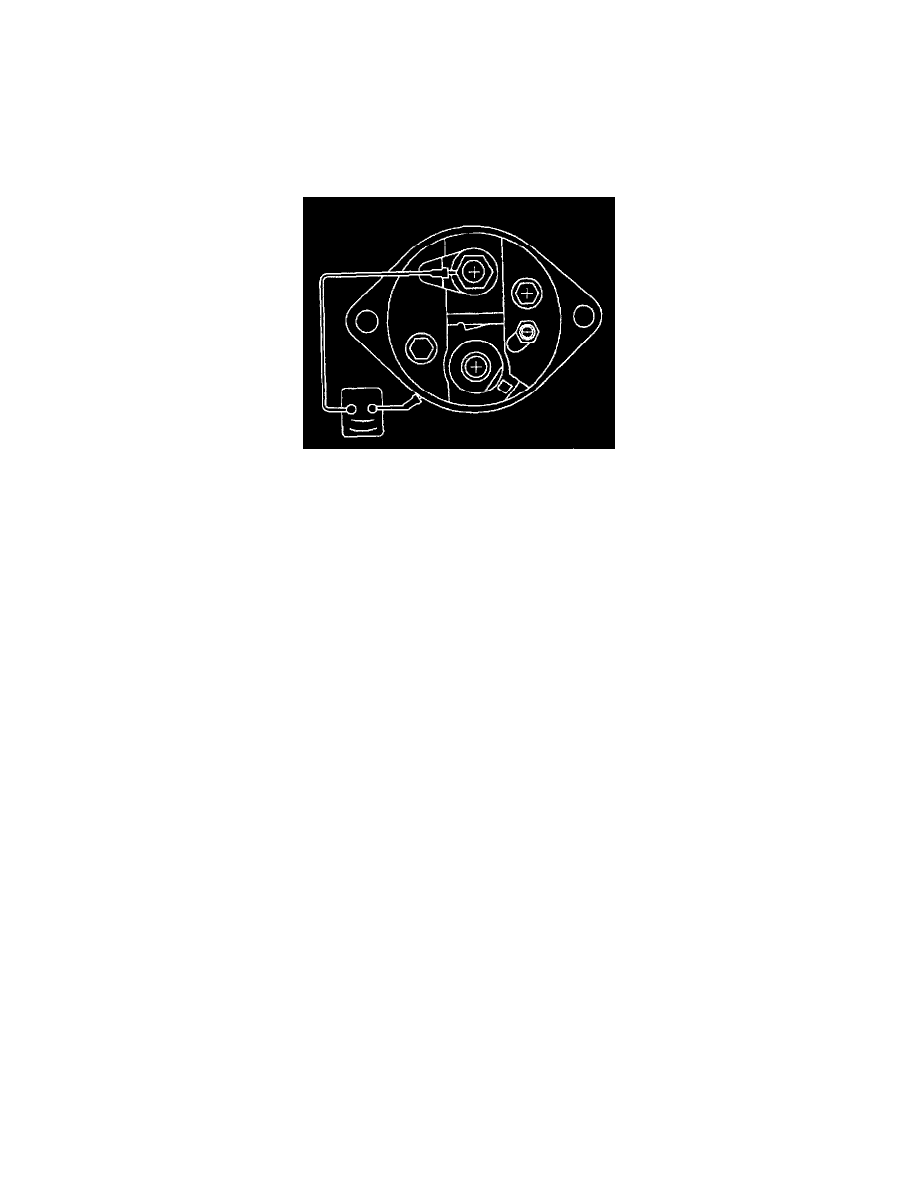K 1500 Truck 4WD V8-6.5L DSL Turbo VIN S (1999)

Starter Motor: Service and Repair
Starter Motor Inspection (28-MT)
Cleaning and Inspection Procedure
NOTE: Do not clean or immerse the starter motor parts in grease dissolving solvents. The solvents will dissolve the grease packed in the drive or the
bearings, and may damage the armature or the field coil insulation.
Perform the following cleaning and inspection procedure in order to determine the serviceability of the starter motor components and assemblies.
1. Clean all starter motor components with a clean soft cloth prior to testing.
2. Inspect all of the components for the following conditions:
^
Cracks
^
Distortion
^
Structural damage
Replace any components or assemblies that exhibit any of the above conditions.
3. Inspect the threaded components for the following conditions:
^
Stripped threads
^
Crossed threads
^
Otherwise damaged threads
Replace the components exhibiting the above conditions if the above condition cannot be cleaned up using a suitable tap or die.
4. Inspect the solenoid assembly for a cut or a torn boot. If the boot is damaged, replace the solenoid assembly.
5. Inspect the clutch drive assembly. Replace the assembly if the following conditions exist:
^
The pinion gear turns roughly or turns in both directions
^
The pinion gear has teeth that are broken or show evidence of step wear
^
The shift lever collar shows deep scoring or other damage
6. Inspect the brush holder assembly for loose riveted joints and cracked or broken insulation. Replace the bush holder assembly if damaged.
7. Inspect the brushes for excessive wear. The minimum allowable brush length is 12 mm (0.472 in). Replace excessively worn brushes in sets.
8. Inspect the drive end housing bushing for scoring or other damage. Replace the damaged bushing.
9. Perform the following ball bearing inspection procedure:
9.1. Hold the armature or driveshaft, Slowly rotate the outer bearing race by hand
9.2. Verify that the bearing turns freely without binding or the feel of flat spots
9.3. Replace any damaged bearings
10. Inspect the armature assembly for the following conditions:
^
Gear teeth that are broken, or that show evidence of step wear or root interference.
^
A rough commutator surface. Polish the surface with 400 grit polishing cloth if necessary. Thoroughly clean metal dusts from between the
commutator bars. If the commutator surface cannot be repaired in this manner, replace the armature assembly. Do not turn the commutator in a
lathe.
^
A worn commutator. Replace the armature assembly if the commutator outer diameter is less than 36 mm (1.378 in) or if the undercut depth at
any point is less than 0.2 mm (0.008 in). Do not undercut the insulation.
11. Inspect the driveshaft for the following conditions. Replace the driveshaft if necessary.
^
Scored or damaged shaft where the driveshaft turns inside the bushing
^
Internal gear with teeth broken or showing evidence of step wear
^
A damaged spline. The clutch drive assembly must slide smoothly and easily over the full length the spline.
Component Electrical Testing
Perform the following electrical tests in order to determine the serviceability of the starter assemblies:
1. Use an ohmmeter in order to test the windings of the solenoid assembly for continuity:
^
Test the resistance of the solenoid pull-in and hold-in windings in a series by measuring the resistance between the motor terminal and the
solenoid case.
